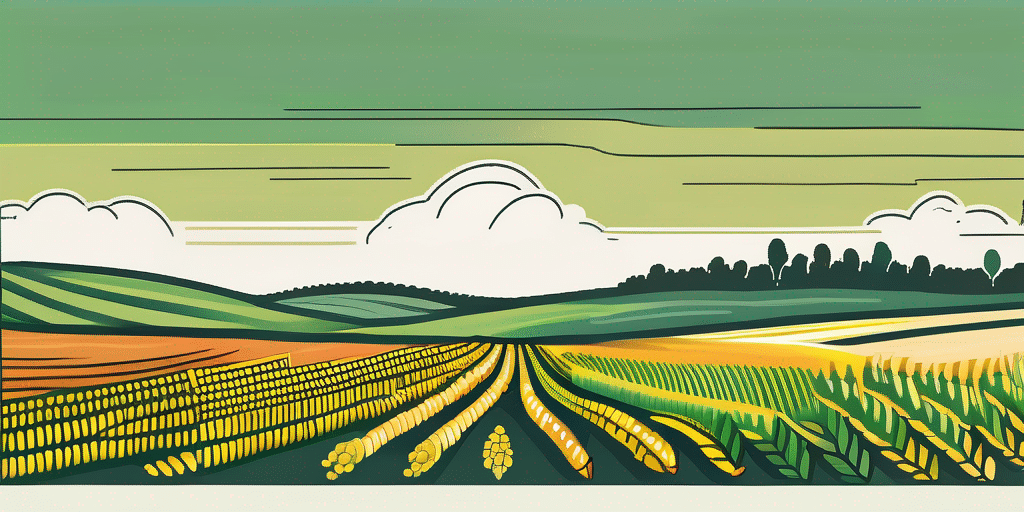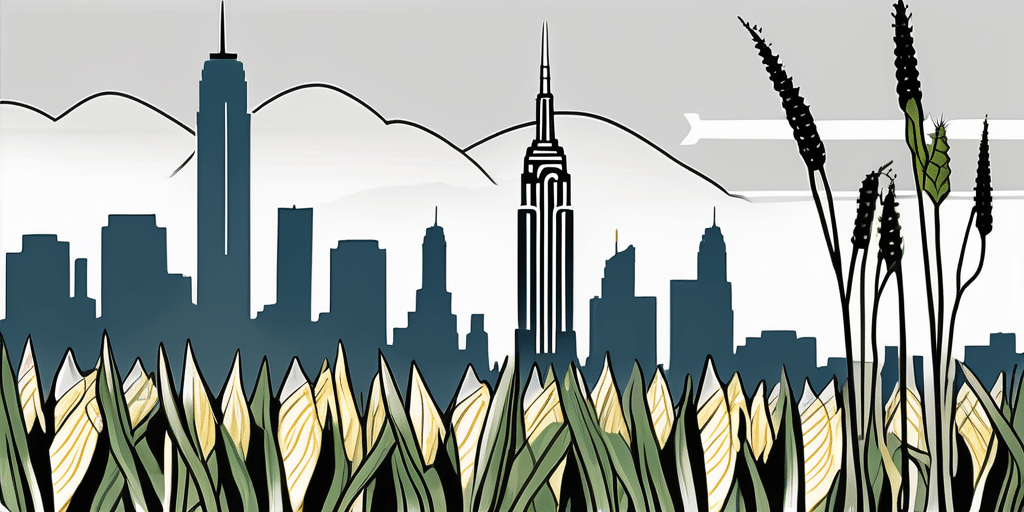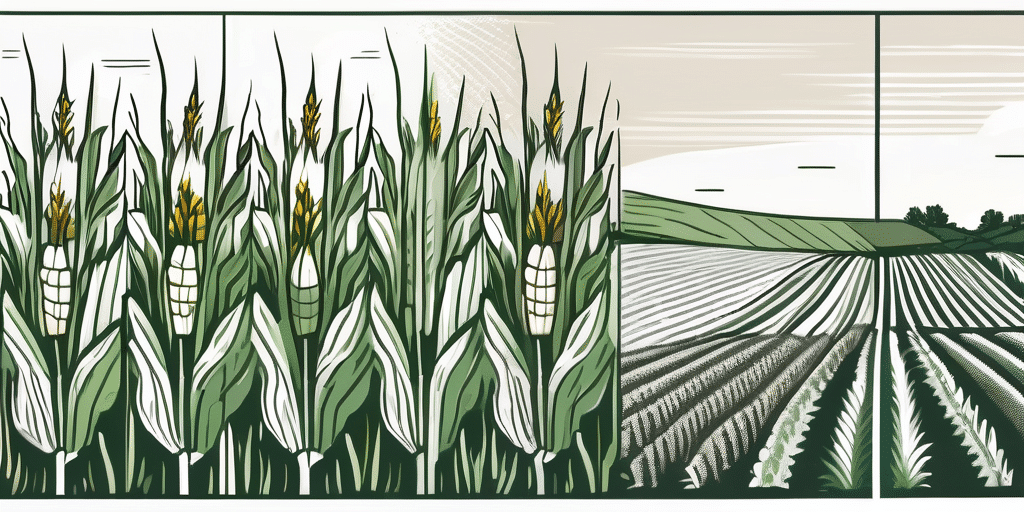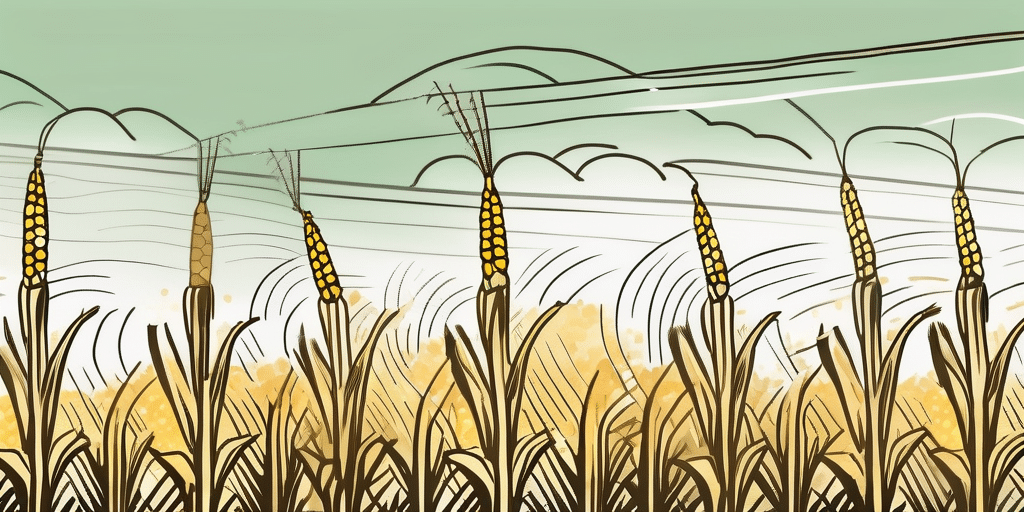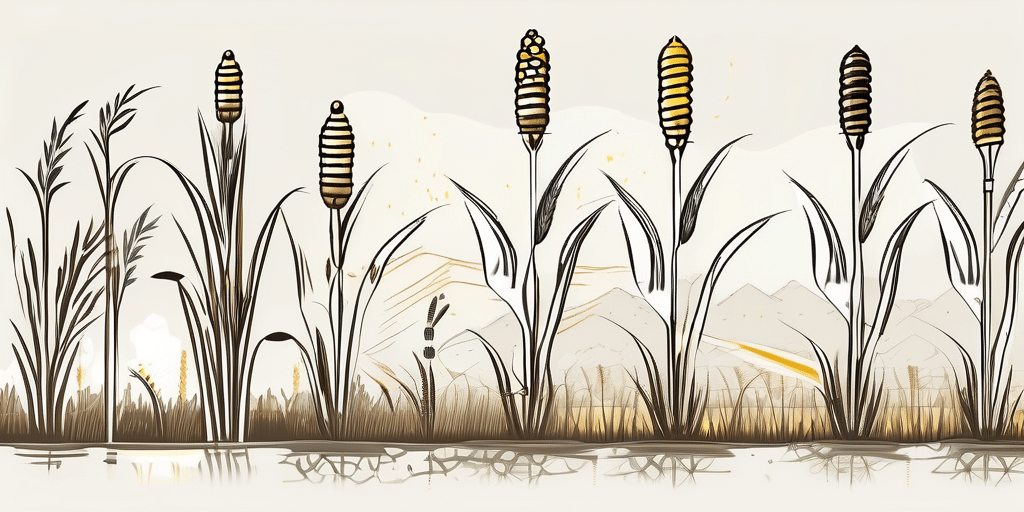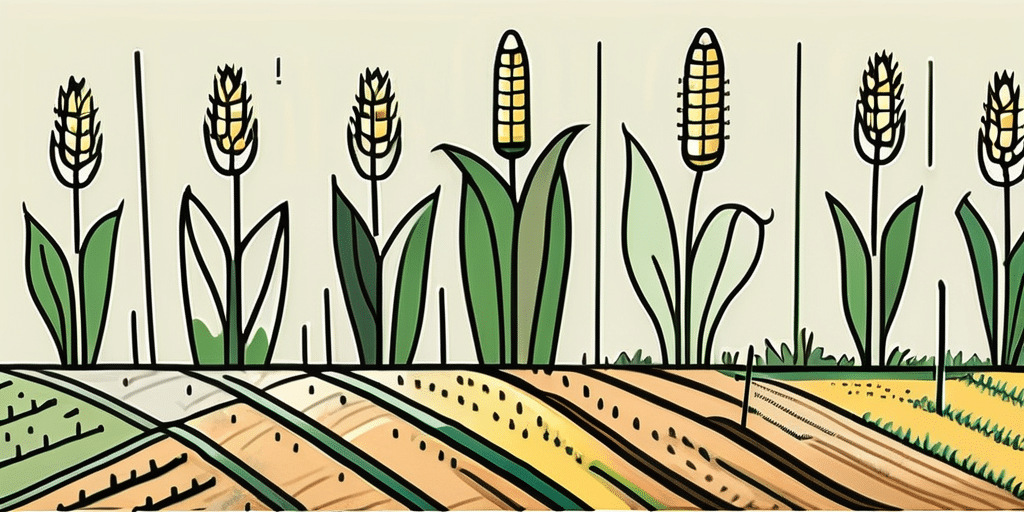Are you itching to try your hand at growing Silver King corn in the beautiful state of Kentucky? Well, you’re in luck! In this article, we will guide you through the process of planting and growing this delightful variety of corn. So, put on your gardening gloves and let’s get started!
Climate & Hardiness Zones in Kentucky
Before we dive into the nitty-gritty of planting and growing Silver King corn, let’s first understand the climate and hardiness zones in Kentucky. The state falls into the USDA hardiness zones 6a to 7b, which means it experiences cold winters and hot summers. This is ideal for corn cultivation as it thrives in temperatures between 60°F (15.5°C) and 95°F (35°C). Additionally, Kentucky receives an average of 40-50 inches of rainfall annually, which provides the necessary moisture for the corn to flourish.
It’s important to note that the diverse topography of Kentucky also plays a significant role in its climate variations. The Appalachian Mountains in the eastern part of the state contribute to cooler temperatures and higher precipitation levels, creating microclimates that differ from the rest of Kentucky. This means that while the majority of the state falls within zones 6a to 7b, there are pockets of higher or lower hardiness zones within Kentucky’s borders.
Furthermore, Kentucky’s climate is influenced by its proximity to the Ohio River and the Mississippi River, which can lead to variations in temperature and humidity levels across different regions of the state. These rivers not only impact the weather patterns but also provide essential water sources for irrigation, particularly during dry spells in the summer months. Understanding these intricate climate dynamics is crucial for successful agricultural practices, including cultivating crops like Silver King corn in Kentucky.
When to Plant Silver King Corn in Kentucky
Now that we know Kentucky’s climate, it’s time to determine the best time to plant Silver King corn. Ideally, you should wait until the soil temperature reaches around 60°F (15.5°C) before planting. This usually happens in late April or early May in Kentucky, depending on the weather conditions.
Before planting, it’s recommended to prepare the soil by removing any weeds and adding organic matter, such as compost. This will help provide the corn with the necessary nutrients for healthy growth.
Once the soil is prepared, you can begin planting the Silver King corn seeds. Make sure to space the seeds 8-12 inches apart and plant them at a depth of 1-2 inches. For optimal pollination and ear development, it’s best to plant the seeds in rows, allowing for proper air circulation.
When selecting a location for planting Silver King corn in Kentucky, it’s important to choose a spot that receives full sunlight for at least 6-8 hours a day. Corn is a sun-loving plant and thrives in direct sunlight.
In addition to preparing the soil with compost, you can also consider adding a balanced fertilizer to further enhance the nutrient content of the soil. This will ensure that the corn plants have access to essential nutrients throughout their growth cycle.
Watering is crucial for the successful growth of Silver King corn. It’s recommended to water the plants consistently, ensuring that the soil remains moist but not waterlogged. During hot summer months, pay close attention to the moisture levels to prevent the plants from drying out.
When to Harvest or Pick Silver King Corn in Kentucky
After patiently waiting for your Silver King corn to grow, it’s time to reap the rewards of your hard work. Typically, Silver King corn takes around 80-90 days from planting to reach maturity. You can determine if the corn is ready for harvest by gently squeezing a kernel. If a milky substance is released, it signifies that the corn is fully ripe and ready to be picked.
To harvest the corn, firmly grasp the ear at the base and swiftly twist it downward, away from the stalk. The goal is to detach the ear without damaging the plant. Avoid yanking the ears forcefully, as this can harm the plant and impact future growth.
Once harvested, it’s best to consume the corn as soon as possible for maximum flavor and deliciousness. However, if you have an abundance of ears, you can also store them in the refrigerator for up to a week or blanch and freeze them for longer storage.
Silver King corn, known for its exceptional sweetness and tenderness, thrives in the fertile soils and moderate climate of Kentucky. The state’s rich agricultural history provides an ideal environment for growing this popular variety of corn. When planting Silver King corn in Kentucky, it is essential to ensure proper spacing between the rows to allow for adequate sunlight and airflow, promoting healthy growth and development.
As Silver King corn matures, its vibrant green stalks can reach heights of up to 7-8 feet, showcasing the plant’s robust nature. The ears of corn, wrapped in their protective husks, hold the promise of juicy, flavorful kernels that are a delight to harvest and enjoy. Kentucky’s agricultural community takes pride in cultivating Silver King corn, a staple crop that embodies the essence of local farming traditions.
Frequently Asked Questions
Now, let’s address some frequently asked questions about planting and growing Silver King corn in Kentucky.
Q: Should I start Silver King corn indoors or directly sow the seeds in the garden?
A: Silver King corn is best planted directly in the garden, as it doesn’t tolerate transplanting well. Sowing the seeds directly into the prepared soil will ensure healthier and stronger plants.
Q: How often should I water Silver King corn?
A: Corn plants need regular watering, especially during dry spells. Aim to provide at least 1 inch of water per week, either through rainfall or supplemental irrigation. However, be cautious not to overwater, as excessive moisture can lead to diseases.
Q: Can Silver King corn be grown in containers or pots?
A: While it’s not recommended to grow Silver King corn in containers, you can try it if you have a large enough pot or container. Keep in mind that corn has an extensive root system and requires ample space for optimal growth. Ensure the container is deep and wide enough to accommodate the plant’s needs.
Q: Are there any common pests or diseases that affect Silver King corn?
A: Unfortunately, corn is susceptible to various pests and diseases. Some common pests include corn earworms, European corn borers, and armyworms. To protect your crop, use natural or organic pest control methods or consult with your local agricultural extension office for specific recommendations tailored to your area.
As for diseases, stalk rot, gray leaf spot, and common rust are a few that can affect corn. Implementing proper crop rotation, practicing good sanitation, and using disease-resistant cultivars can help prevent or mitigate these issues.
Now, let’s delve a little deeper into the fascinating world of corn pests. Corn earworms, also known as Helicoverpa zea, are one of the most common and destructive pests that affect corn crops. These caterpillars feed on the corn ears, causing significant damage. To control earworms, you can employ various methods such as using pheromone traps, applying biological control agents, or even handpicking the caterpillars.
Another notorious pest is the European corn borer, scientifically known as Ostrinia nubilalis. These insects tunnel into the stalks of corn plants, weakening them and making them more susceptible to diseases. To combat corn borers, you can implement cultural practices like removing and destroying infested stalks, as well as using insecticides if necessary.
Lastly, let’s talk about armyworms, the voracious feeders that can quickly devour corn leaves and cause extensive damage. Armyworms are the larvae of certain moth species and can be a significant threat to corn crops. To control armyworms, you can introduce natural enemies like parasitic wasps or use insecticides as a last resort.
With these additional insights into corn pests, you are now equipped to tackle any challenges that may arise during your Silver King corn-growing journey. Remember, knowledge is power, and being proactive in pest management will help ensure a successful harvest.
Now that you have all the information you need, it’s time to unleash your inner corn-growing expertise! Remember, each corn-growing journey is unique, and it’s essential to adapt your practices based on your specific location and growing conditions. So, go ahead, plant those Silver King corn seeds, and get ready to savor the sweet taste of success!
Join the How to Grow Everything Community
Ready to transform your green thumb into a corn-growing superpower? Subscribe for free to How to Grow Everything and start building the garden of your dreams today! Receive personalized gardening advice tailored to Kentucky’s grow zone, your experience level, and your specific gardening interests. Our family is committed to helping you succeed in your gardening journey with the best tips, deals, and expert knowledge—all delivered straight to your inbox, 100% free, with no spam, just the support you need. Become part of a community that grows together!

